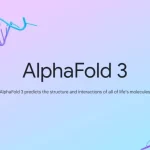
ChIP-Seq Demystified: From Basics to Advanced Analysis Techniques
September 6, 2023How to Optimize Your ChIP-Seq Experiment: Tips from the Pros
So, you’re intrigued by ChIP-seq, right? Chances are you’ve heard of it in bioinformatics circles and wonder what all the buzz is about. Well, let’s pull back the curtain and delve into what ChIP-seq is, how it’s revolutionizing research, and why those mysterious “peaks” are so darn important.
What is the ChIP-seq Analysis Method?
To understand ChIP-seq, first, let’s break down ChIP, which stands for Chromatin Immunoprecipitation. This method lets you pick out specific pieces of DNA that a known protein interacts with. When you slap on “-seq” at the end, we’re adding next-gen sequencing to the mix. The result? You get a super-detailed map of protein-DNA interactions across the genome. It’s like Google Maps but for your genes!
What are ChIP-Seq and RNA-Seq?
While both involve next-generation sequencing, the primary difference lies in what they are trying to uncover. ChIP-Seq aims to understand how genes are regulated by identifying proteins that bind to DNA. RNA-Seq seeks to identify which genes are active (or “expressed”) at any given time.
Why do these Differences Matter?
For instance, RNA-Seq might reveal that a specific gene is highly active in cancer cells. ChIP-Seq can take it a step further by identifying the proteins responsible for activating that gene, giving researchers targets for potential therapies.
Applications: Where and When to Use Each
ChIP-Seq is particularly useful when you want to understand the regulatory mechanisms of genes. It’s like having a roadmap that shows you how to get from Point A to Point B. On the flip side, RNA-Seq is your go-to when you want a full picture of what genes are active under specific conditions like disease states or developmental stages.
The Nitty-Gritty: Peaks and Reads
Both techniques generate data that researchers refer to as “peaks” and “reads.” In ChIP-Seq, peaks indicate regions where protein-DNA interactions occur. In RNA-Seq, reads represent the number of times a particular RNA sequence appears, offering a measure of gene activity. Understanding these metrics is key to interpreting the results correctly.
So, Which is Better?
It’s not about one being superior to the other; it’s about the research questions you’re aiming to answer. For some studies, using both techniques in tandem can offer a more comprehensive understanding of gene regulation and expression.
What’s ChIP-seq Good For?
Why bother? Well, this technology can help us see which genes are regulated by which proteins. This information is invaluable for research into diseases like cancer, where regulation goes haywire, and in understanding basic biological processes.
ChIP in the World of Bioinformatics
In bioinformatics, ChIP methods form the backbone of understanding gene expression at the molecular level. The data generated from ChIP-seq studies often require sophisticated analysis, but the insights are worth the computational muscle.
Why is a ChIP Assay Important?
The ChIP assay lays the groundwork. It allows us to isolate, let’s say, a ‘snippet’ of DNA to study how proteins interact with it. It’s the detective work before the big reveal, offering context that makes ChIP-seq data meaningful.
Analyzing ChIP PCR Data
Now, to analyze the data, you need software like MACS or PeakSeq. These tools help you identify the “peaks,” which are regions where proteins have bound to the DNA.
Principle of ChIP-on-ChIP
ChIP-on-ChIP (Chip on Chip) is another technique where DNA fragments are arrayed onto a slide rather than being sequenced. It’s like a ‘lite’ version of ChIP-seq, but less detailed.
The ChIP Versus ChIP-seq Debate
While both methods aim to find out where proteins bind to DNA, ChIP-seq offers a more comprehensive view, covering the whole genome instead of selected regions. It’s like choosing between a magnifying glass and a microscope.
Step-by-Step Guide to ChIP-seq
It starts with cross-linking DNA and proteins, followed by shearing the DNA into bits. Then comes the immunoprecipitation step to snag the protein-DNA complexes, and finally, sequencing to identify those DNA regions.
ChIP-seq Versus RNA-seq: What’s the Deal?
Both are next-gen sequencing techniques, but while RNA-seq studies RNA to find out what genes are being expressed, ChIP-seq focuses on the interaction between DNA and proteins to discover which genes are regulated by which proteins.
A Look at Peaks in ChIP-seq
Peaks in your data are like gold nuggets—they show where proteins have bound to the DNA. There are broad peaks and narrow peaks, indicating different types of binding. Broad peaks often signify regions with multiple protein binding sites, while narrow peaks indicate single, specific binding events.
The Million-Reads Question
For ChIP-seq, you typically need millions of reads to get meaningful results. The more reads, the more accurate your data.
DNA Quantity for ChIP-seq
You don’t need a ton of DNA, but you do need enough—usually nanogram to microgram amounts—to get robust results.
Broad and Narrow Peaks: What’s Up With That?
Broad peaks usually suggest diffused or multiple binding sites. Narrow peaks are more precise and often have higher intensity, meaning stronger binding events.
Different Types of ChIP Sequencing
There’s standard ChIP-seq, ChIP-exo which offers higher resolution, and CUT&RUN, which is less sample-intensive. Each has its pros and cons, depending on what you’re looking for.
Peaks, Intensity, and Frequency: The Complex Relationship
Peak intensity depends on several factors like protein abundance and binding affinity. Higher frequency doesn’t necessarily mean higher intensity; it’s not a straightforward relationship.
Intensity vs. Frequency: The Final Word
Intensity and frequency are independent of each other. Higher amplitude, however, often results in increased intensity. So, if you’re looking at a graph and see some peaks shooting up, those are your high-intensity spots!
So, there you have it: a deep dive into ChIP-seq and its nuances. From the basic principles to peak analysis and everything in between, ChIP-seq is a vital tool in modern biology and bioinformatics that allows us to probe the secret lives of our genes. Whether you’re a researcher, student, or just bio-curious, ChIP-seq offers a fascinating lens into the complex world of gene regulation.


















